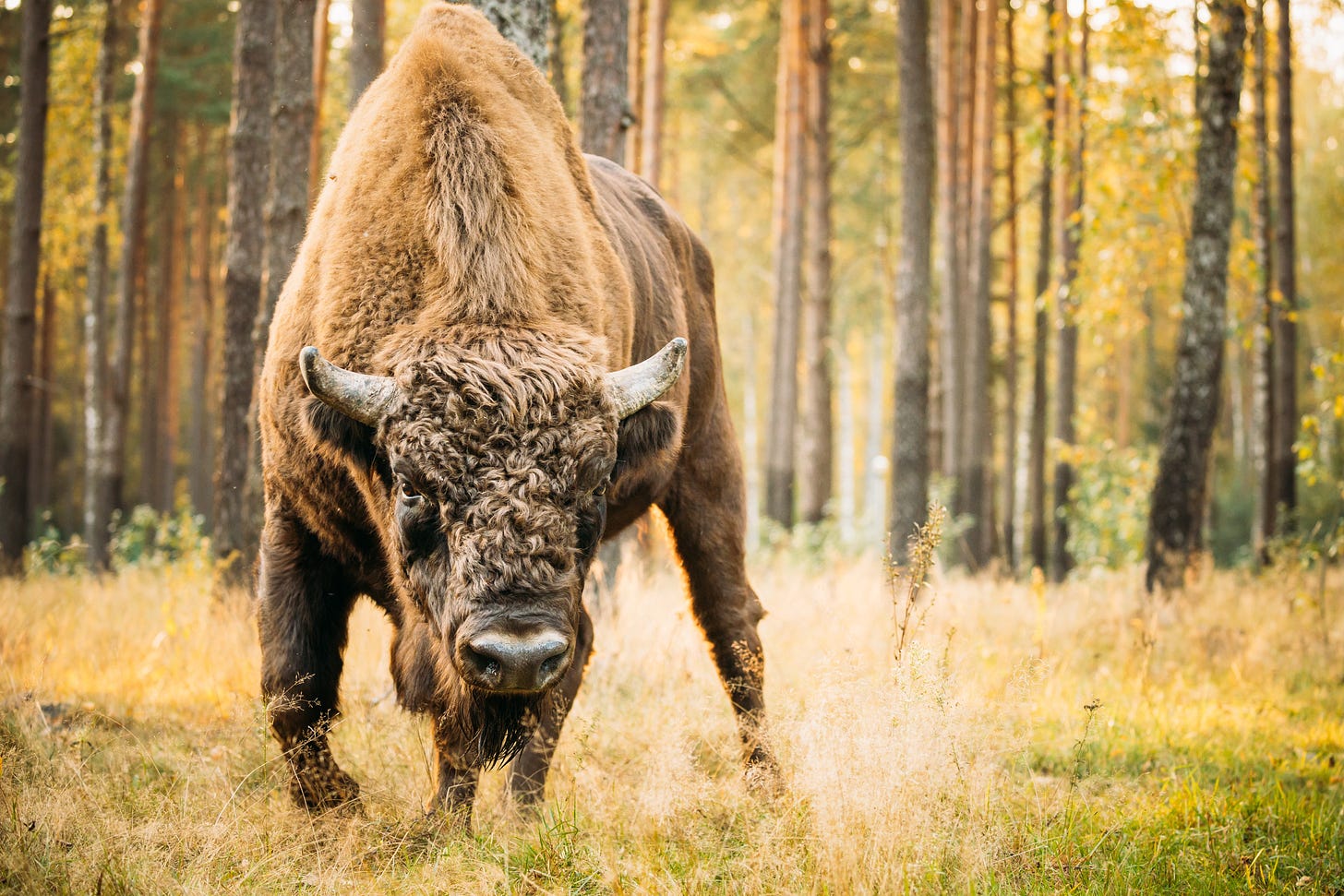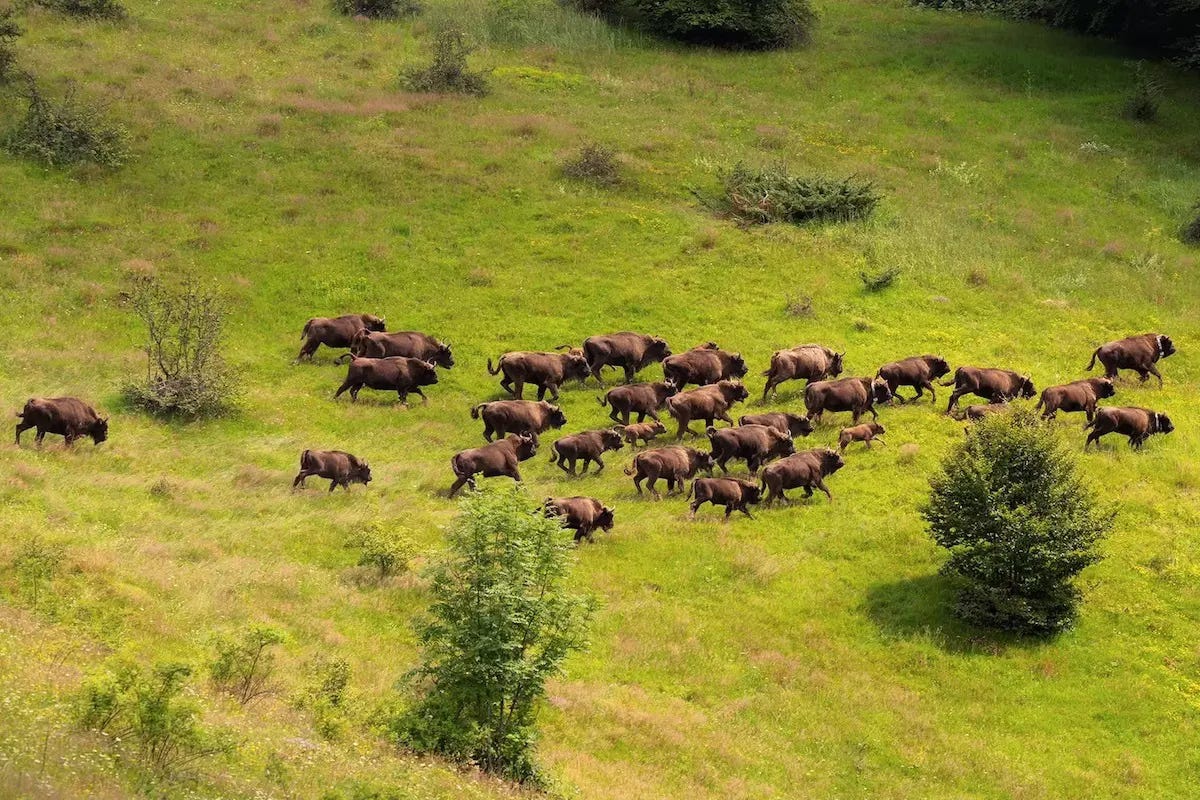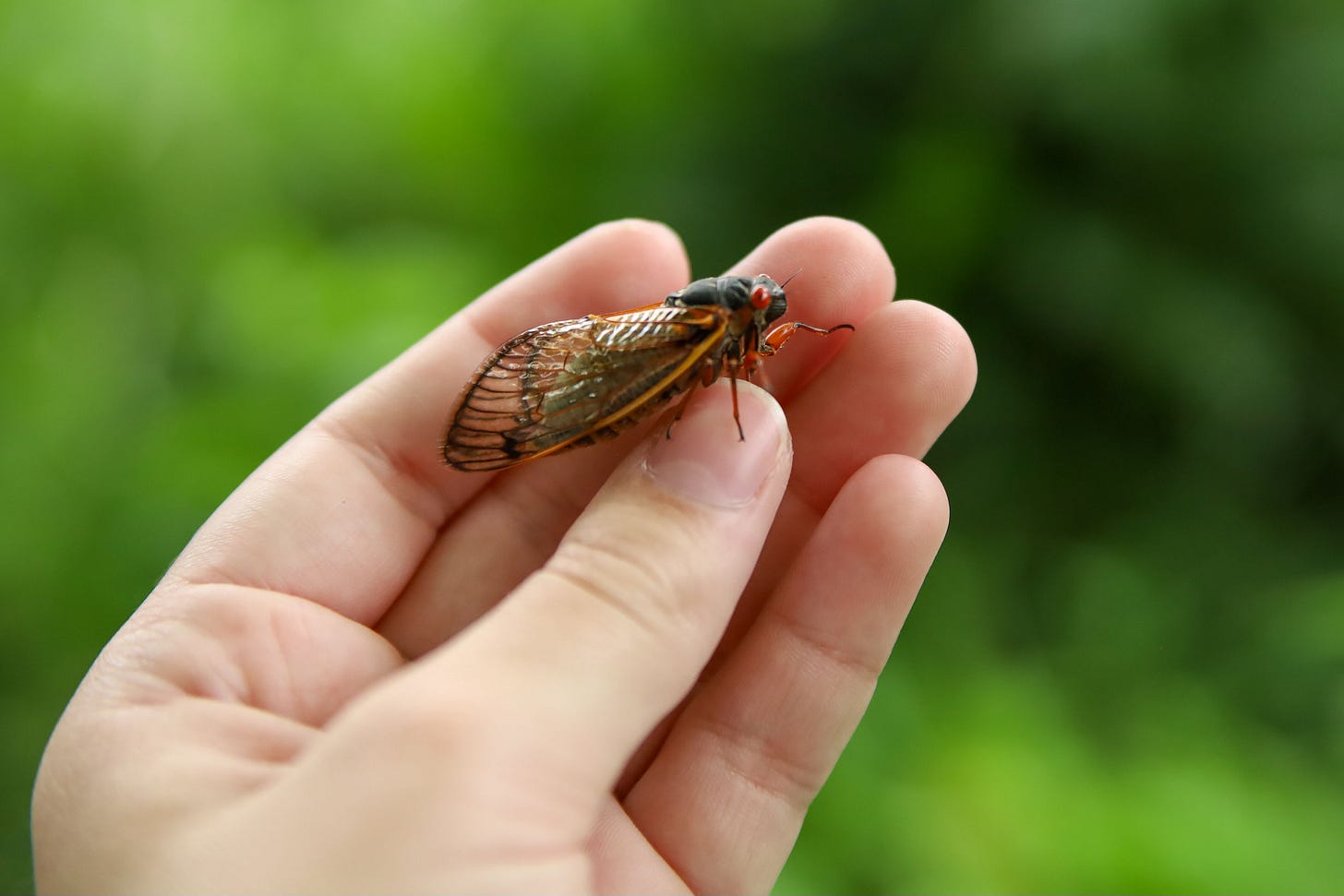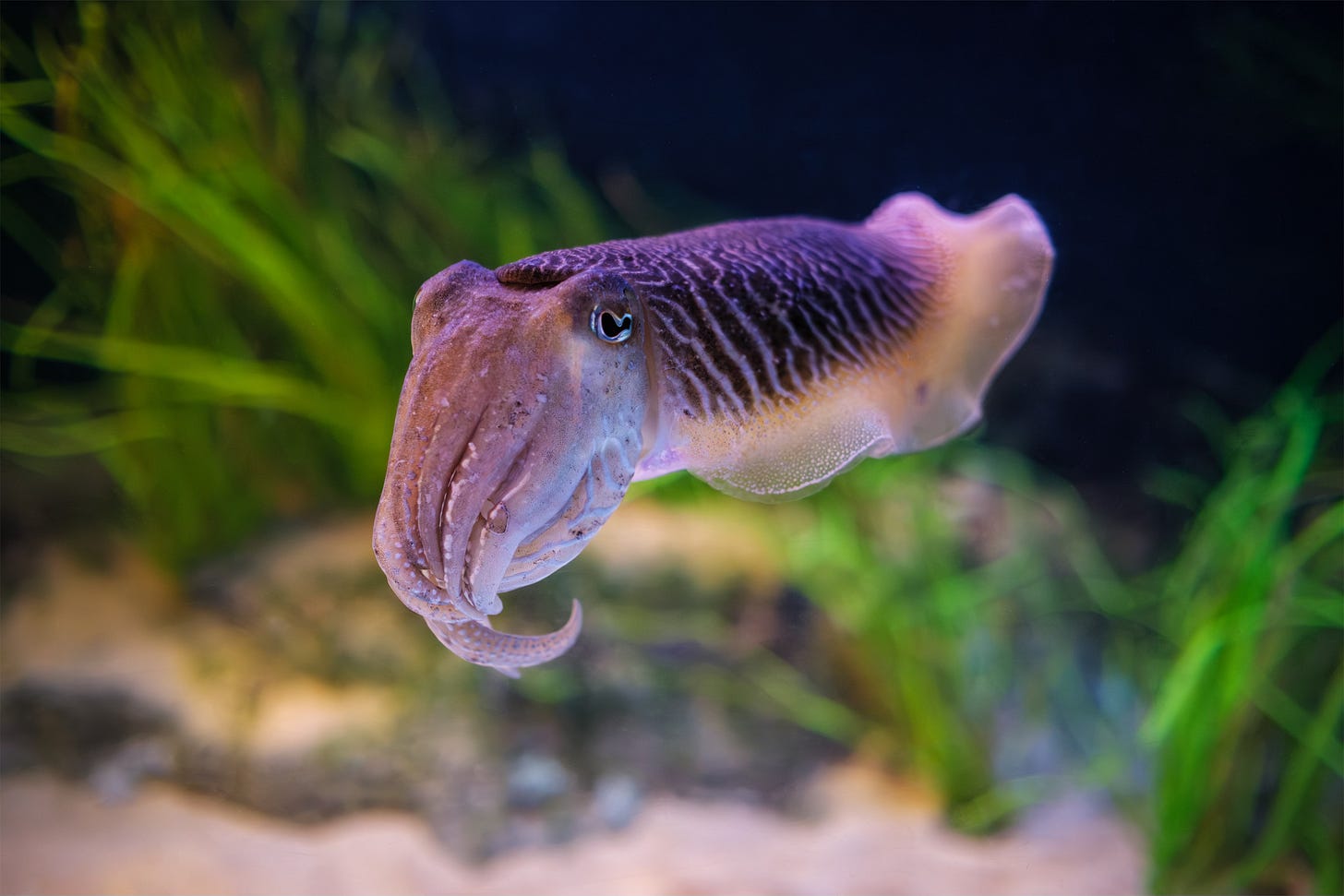200 Bison > 43,000 Cars: Romania's wild bison math
Plus, cuttlefish wave hello from the deep ocean
By Dan Fletcher
Here is today’s audio edition!
When conservationists released the first European bison into Romania's Țarcu Mountains in 2014, they were focused on bringing back a magnificent species that had disappeared from the region 200 years earlier. No one could have predicted that these shaggy giants would become an unexpected boon to the climate along the way.
After vanishing from Romania's landscape due to excessive hunting and habitat loss, European bison are once again roaming free through the Carpathian wilderness. What began with just a few animals has grown into one of Europe's most impressive rewilding success stories, with over 200 bison now thundering across Romania's mountains.
The story of the European bison is first and foremost a tale of ecological recovery. These massive herbivores — weighing over 2,000 pounds and standing six feet tall at the shoulder — aren't just impressive to look at. They're ecosystem engineers, reshaping their environment through grazing patterns that create diverse mosaics of vegetation. Their heavy hooves break up compacted soil, their selective feeding promotes plant diversity, and their movement patterns help disperse seeds across vast distances.
For the bison themselves, this represents a dramatic reversal of fortune. In the early 20th century, the species was completely extinct in the wild, surviving only in captivity with a mere 54 animals left in zoos worldwide. Through careful breeding and reintroduction efforts, they've rebounded to over 9,000 across Europe today, with Romania becoming a crucial stronghold for their recovery.
The initiative has grown steadily, with new animals regularly added to boost genetic diversity. Last May, Romania welcomed 14 more bison from Sweden and Germany, pushing the Țarcu Mountains population above 200 individuals — one of the largest free-roaming herds in Europe.
But the bison story extends beyond the animals themselves. For communities in rural Romania, the bison's return has created new economic opportunities through nature-based tourism. Villages that once faced economic uncertainty now welcome visitors eager to catch a glimpse of Europe's largest land mammal in its natural habitat. The project demonstrates how conservation can align with sustainable rural development, creating a model that benefits both nature and people.
Then, last year, scientists discovered something unexpected — these massive herbivores are also helping to combat the effects of carbon dioxide in the atmosphere. A study from Yale University revealed that the 170 bison grazing through the Țarcu at the time were dramatically boosting the ecosystem's carbon capture ability. By maintaining diverse vegetation patterns and influencing soil health, they help sequester an additional 59,500 tons of carbon annually, roughly equivalent to the emissions of 43,000 cars.
"Our work reveals that wild animals could substantially increase an ecosystem's carbon budget by 60-90%," says Yale Professor Oswald Schmitz, highlighting an ecological benefit that nobody anticipated when the reintroduction began. It's a perfect example of how restoring nature often delivers far more benefits than we initially expect.
The story of Romania's bison reminds us why conservation matters in the first place. When we restore keystone species like the European bison, we're not just saving one animal — we're rebuilding entire ecosystems. The climate benefits are a welcome bonus, but the true measure of success is seeing these magnificent creatures once again shaping the landscapes they've called home for millennia.
As the Yale researchers apply their model to other rewilding projects around the world, they're discovering that this pattern holds true across diverse ecosystems. When we give nature the space to heal and bring back missing species, the benefits cascade through the environment in ways we're only beginning to understand.
For now, Romania's growing bison herds continue their quiet work across the Carpathian Mountains — grazing, roaming, and rebuilding ecological connections that we severed two centuries ago. Their presence enriches the ecosystem, supports local communities, and yes, helps fight climate change. But most importantly, it rights a historical wrong, returning a magnificent species to where it belongs.
Quick links! 🔗
It’s about to get buggy. Billions of cicadas will emerge across the eastern United States this summer after spending 17 years underground. Known as Brood XIV, these insects will surface en masse from Tennessee to Cape Cod, creating a critical pulse of nutrients in the ecosystem. Their synchronized emergence is a survival strategy that overwhelms predators, ensuring some survive to reproduce. But it’s still great news for some struggling predator populations. Researchers have found their arrival creates ripple effects through the food web, temporarily boosting populations of birds and even affecting caterpillar numbers on oak trees.
Can this deep-sea creature wave? French neuroscientists have discovered that cuttlefish may have a sophisticated communication system involving arm-waving patterns. The researchers identified four distinct waving motions (up, side, roll, and crown) that generate vibrational waves through water. When shown videos of these gestures, cuttlefish responded by waving back, suggesting this could be a previously unrecognized form of cephalopod language beyond their famous color-changing abilities.








Interesting a herbivore can promote carbon capture!
Always good to read a positive environmental story